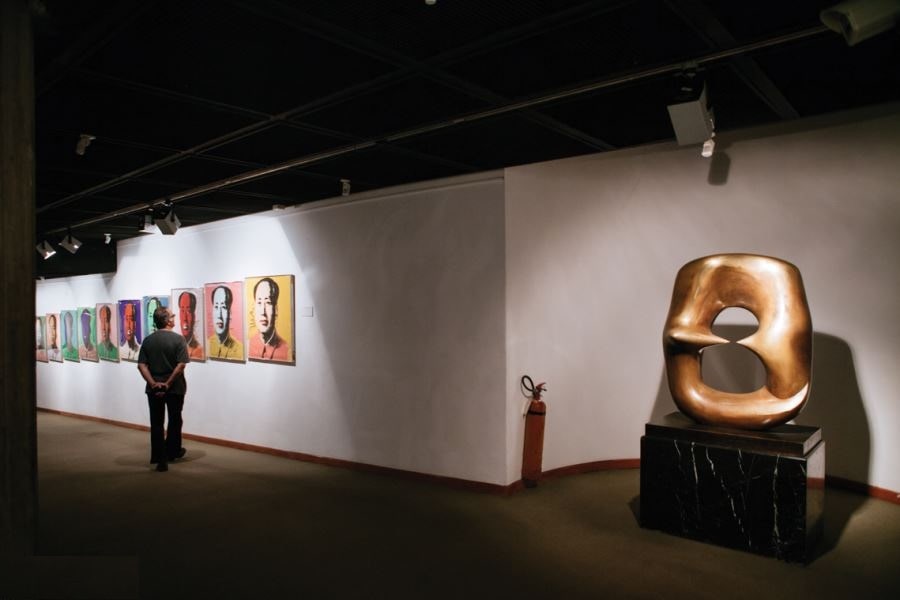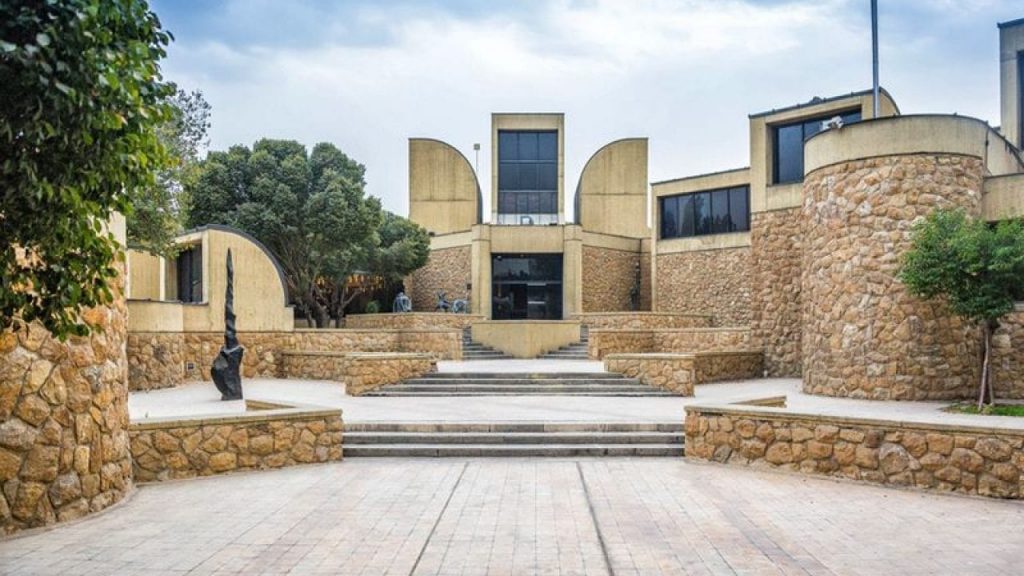Introduction in Tehran Museum of Contemporary Art
Museums are among the main attractions in modern cities, echoing part of a nation’s cultural and artistic heritage. There are various museums in the vibrant city of Tehran, each of which contains specific fans and tourists. But, if you are interested in the modern visual arts, among all museums throughout Asia, you should visit the Tehran Museum of Contemporary Art. The museum includes an unparalleled treasure of contemporary Western art and hosts works by artists whose names are at the headlines of art history books.
The Tehran Museum of Contemporary Art was opened in 1977 A.D with the efforts and initiative of Farah Diba in the western corner of Laleh Park in Tehran’s Amirabad neighbourhood, including the stunning treasure of contemporary art and the owner of one of the 5 to 10 most significant collections of modern art in the world.

Permanent Treasure of Tehran Museum of Contemporary Art
The permanent treasury of the museum preserves more than 3,000 valuable works of the world and Iran’s visual arts elite, of which nearly 400 of them have exceptional priceless value. The museum houses the most diverse and significant treasures from after World War II to before the 1980s outside in Europe and North America.
The museum’s collection of works is exceptional, covering all artistic movements of the 19th and 20th centuries works by well-known artists such as Picasso, Gauguin, Renoir, Lauster, Ernst, Magritte, Pollock, Klein, Bacon, and Hockney. Ganjineh also includes an unparalleled collection of works by Iranian contemporary art pioneers, including paintings by Iranian masters Hossein Zendehroudi, Sadegh Tabrizi, Aydin Aghdashloo, and Sohrab Sepehri.
Most of the works in the museum were purchased, in the 1970s A.D, under the supervision of Farah Pahlavi. The museum’s value is estimated at $five-ten billion, and the material value of some of these works is like royal jewellery, which is the backing of Iranian banknotes.

The architecture of the Tehran Museum of Contemporary Art
The Museum of Contemporary Art in Tehran is a mix of Persian architecture and philosophical concepts with modern elements has been designed and created by Kamran Diba. He included elements of Persian architecture, such as vestibule, chaharsoo, and passageways, in museum design and created the museum’s inner spaces that would strengthen “the connection between humans and their activities.”
In the architecture of the exterior facade, the inspiration from windbreaks in the desert regions of Iran is visible. Traditional rural arches and skylights derived from desert wind towers play the role of a kind of outdoor light conductor in the complex. The Tehran Museum of contemporary art’s architecture does not contain a counterpart in any Arab and Muslim country, including Egypt and Turkey.
The museum structure consists of two general sections, a collection of closed areas and a middle courtyard. The spiral path is designed inside the building to rotate, guiding people down a steep path. The spiral has seven main spaces or galleries. The first space is the main foyer of the building, which is called Gallery Number One. This gallery slowly connects to the gallery behind it and takes the visitor to the ground.
The bottom of the helix and in the heart of the vestibule is a modern work by Japanese artist Noriyuki Haraguchi called Matter and Thought, which combines oil and steel. This work, made in Iran, is the same as Iranian ponds, and due to its reflective characteristic, visitors see it as a great mirror.

Valuable Works in Tehran Museum of Contemporary Art
Tehran Museum of Contemporary Art includes nine galleries, three of which are exhibitions of works by international painters and artists and are kept in the museum’s permanent treasure.
In this treasure trove of highly prized works by Jackson Pollock, Pablo Picasso, Mark Rothko, Paul Gauguin, Willem de Kooning, Francis Bacon, Andy Warhol, Roy Lichtenstein, Jaco Adam, Claude Monet, there are Camille Pissarro, Van Gogh, Lautrec, Marcel Dushan, Renee Magritte, James Ensor, Henri Matisse, Juan Miro, Hans Hartung, Georges Brock, Max Ernst, Kandinsky, and others. Temporary and seasonal exhibitions will be held in six other museum galleries.
The museum’s collection of works can be categorized into three groups: works in the repository (treasure), works presented in galleries and spaces inside the museum, and statues on the exterior. The museum is built on 2,000 square meters of land with greenery surrounding it.
The scenic green space is known, as the Sculpture Garden, which contains valuable statues of famous contemporary artists from Iran and the world, including Henry Moor, Alberto Giacometti, Belgian painter René Margate, and Parviz Tanavoli. The sculpture garden is a vast and grassy environment where the museum building is located in the south, with two entrances, one located towards Laleh Park and the other the main entrance. It is by Kargar Street (Worker Street) on the west of the museum building.

